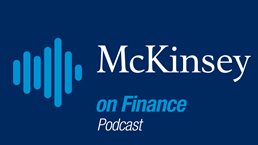Like it or not, hedge-fund activism has become a characteristic of the corporate landscape. In 2015 alone, activists made public demands of some 637 companies worldwide.1 In 2016, they’d already made demands of 625 companies by the end of October.2 And these are just the campaigns that are made public: there are probably at least as many that are never covered by the press because of a quiet settlement between the activist and the target company’s board.
What constitutes an activist and the definition of embedded funds does vary. But combined, there appear to be around 550 “active activists” around the globe,3 controlling more than $180 billion in embedded capital—up from $51 billion in 2011.4 Most are centered in the United States, but new firms have also sprouted up in Australia, Canada, Europe, and Hong Kong. And to magnify their clout, they are increasingly attracting the interest of asset and pension-fund managers and collaborating in transformative campaigns.5 Working together, they could mobilize trillions of dollars to challenge the strategies and performance of publicly traded companies.
Whether you see hedge-fund activists as a catalyst for beneficial changes in governance and strategy or short-term opportunists detrimental to long-term value creation, this much is clear: the growing influence of activists on global capital markets will fundamentally transform how public-company boards interact with investors. This includes the role of the board in investor relations, the importance of outside voices, and more transparent relationships between directors and company managers.
Boards must now be directly involved in investor relations
All medium and large public companies have investor-relations (IR) departments that report regularly to the board about shareholding levels and shareholder concerns. But traditionally, few, if any, directors would actually visit a shareholder to discern his or her view. Most boards would meet with their largest and most interested shareholders at the annual general meeting. But beyond that, reports from IR were more than likely deemed sufficient to understand the views of investors. Even now, some companies still have explicit policies that preclude directors from communicating with investors.
Today, as a direct consequence of shareholder activism, boards and executives frequently review lists of the largest shareholders in order of percentage of holdings. They then decide on a consultation strategy that may well include a visit from an independent director without any management being present. Mary Jo White, the current chair of the US Securities and Exchange Commission, has even publicly stated that shareholder relations are now a board duty: “The board of directors is—or ought to be—a central player in shareholder engagement.”6
Public examples abound. Among companies, Andy Bryant, the independent chair of the board at Intel, meets with four of the company’s largest shareholders each quarter. Sometimes CEO Brian Krzanich or other senior managers are present, and sometimes other independent directors join in. Among asset managers, Larry Fink, CEO of BlackRock (with an estimated $5.1 trillion in assets under management), wrote an April 2015 letter to all S&P 500 CEOs, urging them to have “consistent and sustained engagement” with their shareholders.7 And Bill McNabb, CEO of Vanguard Group (with an estimated $3.5 trillion in assets under management), has encouraged boards to promote communication with shareholders through, for example, a new “shareholder liason committee” or other structures.8 The board of Tempur Sealy International has now created a Stockholder Liaison Committee.9 A new industry of advisory organizations has already sprung up to help boards cope with these new shareholder-relations responsibilities.

Board governance
A collection of insights for corporate boards, CEOs, and executives to help improve board effectiveness including: board composition and diversity, board processes, board strategy, talent and risk management, sustainability, and purpose.
Corporate strategy must consider alternate perspectives
In most, if not all, corporations, senior managers lead an annual strategy meeting to examine where the company is headed with respect to its competitive context. Typically, these are two- or three-day occasions, held off-site, with the agendas carefully planned to maximize the likelihood of developing a coherent and insightful strategic plan.
In fact, according to a recent McKinsey survey,10 boards have significantly increased the time they spend on strategy. This is not surprising given the ever-increasing complexity of the global and digital world we live in. Corporate strategy is tougher to hone and of shorter duration than ever before. An increasing number of companies now insist that strategy be on the agenda of each and every board meeting, so that the directors can be assured that they are investing their time in the most important function: helping to figure out and navigate the way ahead.
When it comes to the traditional off-site, there is a real chance to go back to the basic roots of company competitiveness and to reexamine assumptions and past approaches. This is almost always led by the C-suite team, but it can include external speakers with specific company knowledge. If you, as a director thinking about the next strategic review, were reasonably certain that activists were closely examining your company, why not actively invite their insights?
Given current norms and expectations, asking activists to report their view of alternate corporate strategies to the board may be awkward, or even threatening. But failure to understand alternate strategies to maximize corporate performance might well lead to an open proxy fight. To look at the matter in a less threatening way, instead of having to spend millions on a consulting review, you could get one for free from would-be activist investors.
Board relationships with management must become more transparent
Relationships between a company’s directors and its CEO and C-suite executives depend upon many things, especially the trust between the chair (or lead director) and the CEO. These relationships have always evolved over time, as companies progressed or failed to progress and as CEOs grew into their positions. But the basic operating norm in the past would be to let the managers get on with running the business and fundamentally trust in their strategy for doing so.

McKinsey on Finance Podcast
Insights into value-creating strategies and the translation of those strategies into company performance.
Today, the presence of activists in the market have further transformed these relationships. Questions about performance and strategy have never been absent from board meetings, but with the level of activist interest, they are now always front and center. Directors—who are fundamentally dependent on management for information and data—must constantly be aware that activists and institutional investors are also closely examining their performance. And boards that don’t understand alternative points of view on corporate strategy or bring them to the top management team for consideration can never be fully confident that the management’s view of the world is the right one. The outcome can be bitter. Failure to find out who is interested in your company and who might have a different twist on the strategy can quickly lead to damaging hostilities that could be lethal to the company, its employees, and its customers.
One meaningful step toward greater transparency internally would be to appoint CFOs to companies’ boards of directors. As directors, they could be charged with discerning where activist investors are proposing different approaches—and with purposefully representing any alternate asset-deployment strategies. Since CFOs don’t “own” capital investments the way operating executives and the CEO might, they can afford to be dispassionate third-party evaluators of investment flows and alternate investment strategies. This is a long-standing practice in the United Kingdom, recognizing the CFO’s knowledge of a company’s assets, the returns on those assets, and often a profound viewpoint on the likelihood of a performance improvement.
Activist funds allied with asset and pension-fund managers have transformed the landscape of shareholder involvement. By embracing the three principles outlined above, directors will be better prepared for what’s ahead.


